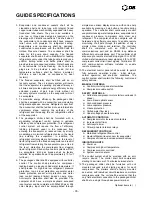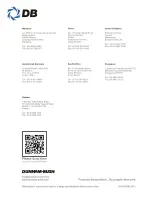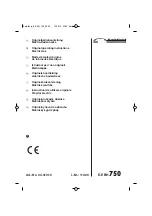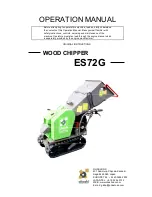
- 33 -
APPLICATION DATA
The necessary control can sometimes be attained via fan
cycling if the tower is rated at the same capacity as the
chiller and the machine will operate under heavy load and
at design conditions. On multiple chiller jobs, a single
tower is oversized relative to the chiller. On other jobs the
tower/chiller might be oversized to the design load and
the machine and tower frequently cycle under light load.
Under these conditions, fan cycling might result in very
rapid temperature swings, which creates a dynamic
situation that occurs faster than the chiller control system
can accommodate it. Thus, in this case, either variable
speed fans or modulating valve control should be used to
regain control of the condenser water. Either type of
control provides precise modulating control of the
condenser water rather than on-off step control. The
control can be initiated either by a condenser water
temperature sensor/controller or, even better, by direct
control from the chiller's computer based upon the
machine's head pressure.
It is further recommended that the condenser water pump
be cycled by the chiller. This is to eliminate potentially
very cold water from going through the condenser while
the chiller is shut down. At the same time it is probable
that relatively warmer chilled water is in the evaporator
(an inversion). Refrigerant tends to migrate if there is a
difference in pressures within the components of the
chiller. It will seek the lowest pressure area of the
packaged chiller which, in this case, would be the
condenser. Starting of a chiller where the refrigerant has
migrated to the condenser is not desirable. The presence
of highly subcooled liquid refrigerant in the condenser will
cause low suction pressures and possibly liquid slugging
of the compressor. If the condenser water pump is off
until the machine starts, the water in the condenser is at
the machine room ambient, which is usually much closer
to the evaporator water temperature. It should be noted
that a flow switch in the condenser water is not required.
Our unit wiring diagrams show the condenser water pump
interlocked with our chiller and controlled to come on only
when a compressor is energized. We also have an
optional analog output on the controller that can be used
to control the tower directly from the head pressure of the
machine. The digital outputs can be used for three-point
floating (or tri-state) control and the analog can be used
to drive a 0 - 10 vdc actuator.
Thus, even though there has been a trend toward fan
cycling control of cooling towers, it is not a device that is
suitable to every installation. We recommend that the
designer carefully evaluate the system to determine if a
more precise method of control is indicated. If there is
any doubt, the more precise control is required. We also
recommend that the condenser water pump interlock in
the chiller control panel be used to enable and disable the
condenser water pumps.
Dunham-Bush Water Cooled Chillers have as standard a
control feature called EPCAS (Evaporator Pressure
Control at Start) which will allow for an inverted start. This
occurs when the chilled water loop in a building is at a
higher temperature than the condenser/tower loop. This
occurs in many buildings after a weekend shut down. The
chilled water loop can be as high as 90°F and the
condenser/tower loop as low as 60°F. With the EPCAS
feature, the valve feeding the evaporator will be throttled
to create a pressure differential to help load the
compressor.
Ice Storage
With a positive displacement rotary screw compressor,
the Dunham-Bush water chiller can easily cool low
temperature glycol down to 22°F with entering condenser
water of 85°F. The same chiller can also produce warmer
(40° to 45°F) leaving glycol for those building systems
designed for only peak shaving. This can be
accomplished by an external signal to the unit controller.
No matter what your ice storage needs, the Dunham-
Bush Water Cooled Screw Flooded Chiller can handle it
better than any other chiller. The use of multiple
compressors minimizes the amount of horsepower used
at any condition high temperature glycol for direct cooling
in coils or low temperature glycol for producing ice at off-
peak power rate times.
Multiple Unit Control
One of the most perplexing problems to system designers
is control of multiple chillers on the same water loop. The
first decision is whether to put the chillers in parallel or
series on the chilled waterside. If lower pumping cost is
paramount, then putting chillers in series is often
preferable. If primary/secondary pumping is utilized with
normal 10°F range, then putting chillers in parallel is
normally used. In either case, the Dunham-Bush
controller can control up to six chillers. This eliminates the
need for external control interface which often becomes
difficult. If more than five chillers need to be controlled, an
Equipment Management Center can be supplied for
controlling/ monitoring up to ten units.
Содержание WCFX-E Series
Страница 27: ...27 TYPICAL WIRING SCHEMATIC Two Compressors Unit...
Страница 28: ...28 TYPICAL WIRING SCHEMATIC...
Страница 29: ...29 TYPICAL WIRING SCHEMATIC...
Страница 30: ...30 TYPICAL WIRING SCHEMATIC...
Страница 31: ...31 TYPICAL WIRING SCHEMATIC...
Страница 36: ......




































